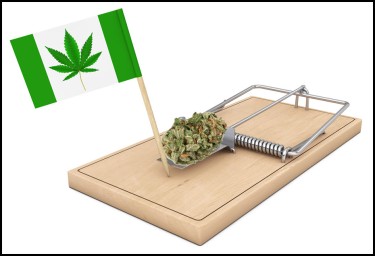
This will prevent rats and mice from getting into your cannabis plants
Growing cannabis is both an art and a science. This means there are a few things to consider about the process, as there is no one-size-fits-all recipe. Therefore, it is important to be armed with the right information about what to do and what not to do during this process. Pests have always been a plague to the success of any agricultural activity, and cannabis is no different. In this article we share the effects of mice and rats on cannabis yields and how you can protect your weed from them.
Rats and mice are rodents that are known to actively forage. They feed on human garbage, plant matter, and even non-edibles. Cannabis plants, like many other plants, fall under the category of plants that rats and mice commonly prey on. This makes mammals one of the most common predators of cannabis plants. They are well suited to the role of scavenger as they have cat-like whiskers that act as feelers and measuring stick. They can also squeeze through tiny holes, meaning they are pests of weed plants grown both indoors and outdoors.
Rats are very efficient at scavenging, which means they can feed on your plants without your knowledge. They generally weigh less than a pound and require only a third of their weight in food on a daily basis, meaning they need to eat regularly. They have special teeth that are good for biting, chewing and gnawing. It is known that a rat’s front teeth grow continuously throughout its life. So next time you come across a rat, make sure to stay away from their front teeth. They tend to constantly chew things to file their teeth and stop them from growing, which is why marijuana stalks are high on their target list.
There are several ways to tell if your cannabis plants are being attacked by rats or mice, especially if you haven’t physically seen the rats. The first thing you need to do is look for signs on the plants that they are being attacked. A common sign of plans is gnawing or chewing on stalks of the cannabis plant. Another common sign to look out for, even if you don’t see the rats, is the presence of rat droppings. Note that this chair can damage your marijuana buds, so do well to keep them away from your produce. There is also a chance that there may be nests, burrows, or colonies of rats or mice in the area, so it’s best to keep an eye out. The rats also leave tracks that form runways that help them connect their food source to their shelter. These trails are always strewn, so it can be helpful to determine whether or not your cannabis plants are being plagued by cannabis plants.
Like any other plant, cannabis actually needs to be protected from pests like mice and rats. Nevertheless, some of the common approaches, such as the extensive use of toxic chemical pesticides, have not led to the desired result. However, these left a devastating footprint on the ecology of the environment in which they were used and caused more damage. Because of this, most growers are actively looking for natural ways to protect their plants from mice and rats without affecting wildlife, groundwater, and the soil.
Using a natural enemy has always been postulated as a convenient and natural way to get rid of mice and rats. For this reason, many cannabis breeders are known for keeping a healthy population of cats both in the neighborhood and in the growing area. Depending on the situation, you may not need to keep cats around your yard as keeping them in the neighborhood may be enough. This ensures that the cats themselves do not pose another problem for the development of the cannabis plants.
While a cat is the most suitable natural enemy for rats and mice, there are other predators that can be used for the same purpose. Some outdoor cannabis growers have relied on the use of carnivorous birds in their area to deal with the presence of rats and mice. Hawks, owls, and eagles are high on the list of villains to use to keep your rat population in check. This comes with limited risk to the plants as the birds are carnivores and are less likely to direct their attention to the plants.
While there are steps that will help get rid of rats from your growing area, there are other steps that will help prevent them in the first place. The summary of these steps is to have a clean environment at all times. This will make your growing area less attractive to rats and mice. This is very important for indoor growers who might have their kitchen close at hand. Kitchen waste should be properly sealed and properly disposed of so that it does not attract rats, which could eventually prey on the plant being grown indoors. Contaminating the area with snacks or leftover food is more like writing out a blank check to rodents and you can be assured that they will always be ready to cash it. Also storage should be in airtight containers or rodent proof as they can also enjoy your fabrics, sofa and valuable documents.
Rats are major pests of marijuana plants and keeping them away from your plants is crucial. A cannabis grower must be careful to spot signs of rat attacks on cannabis plants, even if they can’t see them. Natural steps should be taken to eliminate the rats that do not drastically affect the environment. Likewise, quality measures to promote cleanliness and avoid rats are advisable from the outset.
MORE ABOUT RATS AND MICE ON WEEDS, READ THIS..

MICE EATING OVER 1,100 POUNDS OF WEEDS AGAIN? WHAT?

Post a comment: